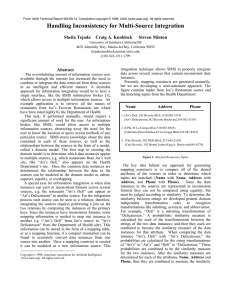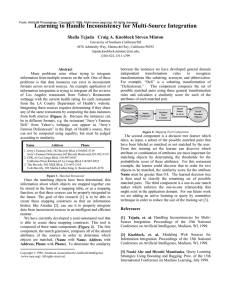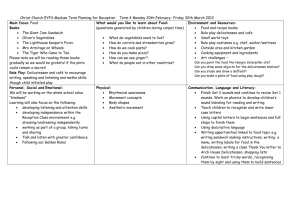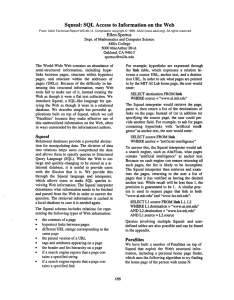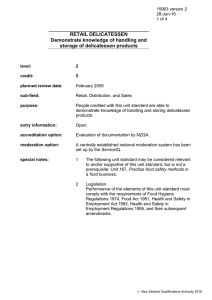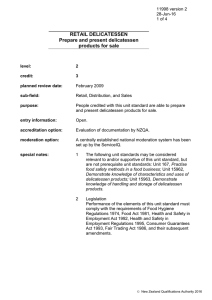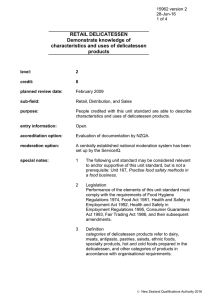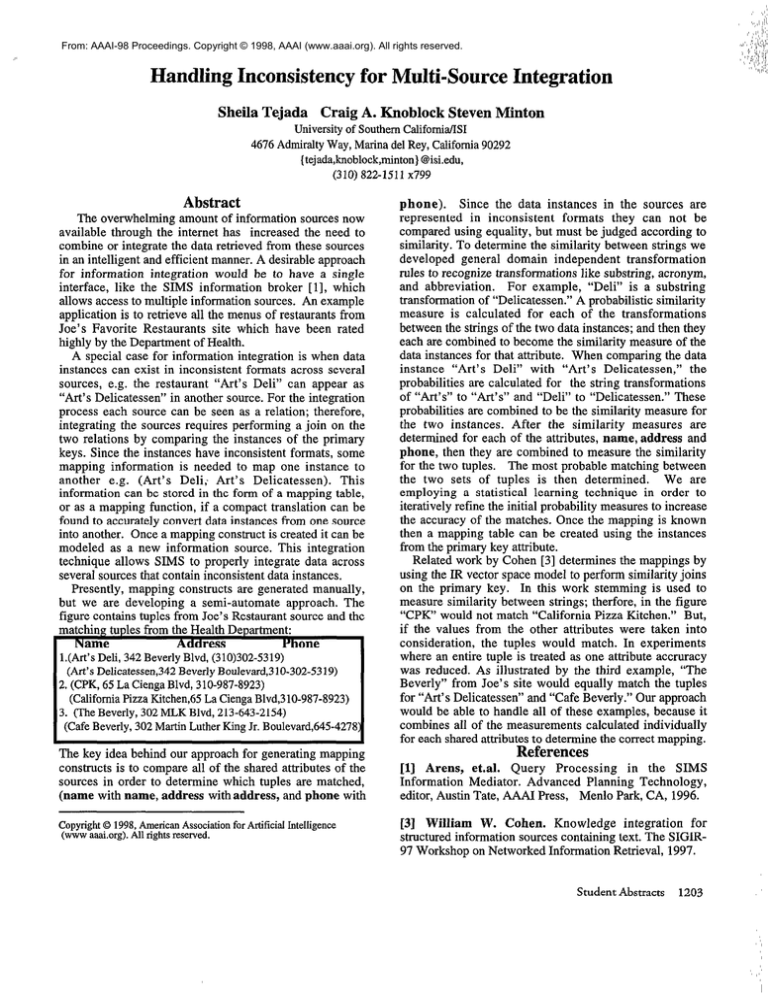
From: AAAI-98 Proceedings. Copyright © 1998, AAAI (www.aaai.org). All rights reserved.
Handling Inconsistency for Multi-Source Integration
Sheila Tejada
Craig A. Knoblock Steven Minton
Universityof SouthernCalifornia/IS1
4676AdmiraltyWay, Marinade1Rey,California90292
{ tejada,knoblock,minton)
@ isi.edu,
(310)822-1511x799
Abstract
The overwhelming amount of information sourcesnow
available through the internet has increased the need to
combine or integrate the data retrieved from these sources
in an intelligent and efficient manner.A desirableapproach
for information integration would be to have a single
interface, like the SIMS information broker [l], which
allows accessto multiple information sources. An example
application is to retrieve all the menus of restaurantsfrom
Joe’s Favorite Restaurants site which have been rated
highly by the Departmentof Health.
A special case for information integration is when data
instances can exist in inconsistent formats across several
sources, e.g. the restaurant “Art’s Deli” can appear as
“Art’s
Delicatessen”
in a,n_oth_er source,
For the intwration
5)-------
process each source can be seen as a relation; therefore,
integrating the sources requires performing a join on the
two relations by comparing the instances of the primary
keys. Since the instanceshave inconsistent formats, some
mapping information is needed to map one instance to
another e.g. (Art’s Deli; Art’s Delicatessen). This
information can be stored in the form of a mapping table,
or as a mapping function, if a compact translation can be
found to accurately convert data instancesfrom one source
into another. Once a mapping constructis createdit can be
modeled as a new information source. This integration
technique allows SIMS to properly integrate data across
severalsourcesthat contain inconsistentdata instances.
Presently, mapping constructs are generatedmanually,
but we are developing a semi-automate approach. The
figure contains tuples from Joe’s Restaurantsource and the
natching tuples from the Health Department:
Address
Name
Phone
l.(Art’s Dell, 342 Beverly Blvd, (310)302-5319)
(Art’s Delicatessen,342 Beverly Boulevard,SlO-3025319)
1.(CPK,65 La CiengaBlvd, 310-987-8923)
(California Pizza Kitchen,65 La Cienga Blvd,310-987-8923)
3. (The Beverly, 302 MLK Blvd, 213-643-2154)
(Cafe Beverly, 302 Martin Luther King Jr. Boulevard,6454278
The key idea behind our approachfor generatingmapping
cnnqtructn
_-__L-_.-_-
is to
___ cnmnare
-----r---
all nf
shared
__.- -__----- the
attributes
of the
phone). Since the data instances in the sources are
represented in inconsistent formats they can not be
comparedusing equality, but must be judged according to
similarity. To determine the similarity between strings we
developed general domain independent transformation
rules to recognize transformationslike substring, acronym,
and abbreviation. For example, “Deli” is a substring
transformationof “Delicatessen.”A probabilistic similarity
measure is calculated for each of the transformations
betweenthe strings of the two data instances;and then they
each are combined to become the similarity measureof the
data instancesfor that attribute. When comparing the data
instance “Art’s Deli” with “Art’s Delicatessen,” the
probabilities are calculated for the string transformations
of “Art’s” to “Art’s” and “Deli” to “Delicatessen.”These
probabilities are combined to be the similarity measurefor
the two instances. After the similarity measures are
determined for each of the attributes, name, address and
phone, then they are combined to measurethe similarity
for the two tuples. The most probable matching between
the two sets of tuples is then determined. We are
employing a statistical learning technique in order to
iteratively refine the initial probability measuresto increase
the accuracy of the matches. Once the mapping is known
then a mapping table can be created using the instances
from the primary key attribute.
Related work by Cohen [3] determinesthe mappings by
using the IR vector spacemodel to perform similarity joins
on the primary key. In this work stemming is used to
measuresimilarity between strings; therfore, in the figure
“CPK” would not match “California Pizza Kitchen.” But,
if the values from the other attributes were taken into
consideration, the tuples would match. In experiments
where an entire tuple is treated as one attribute accruracy
was reduced. As illustrated by the third example, “The
Beverly” from Joe’s site would equally match the tuples
for “Art’s Delicatessen”and “Cafe Beverly.” Our approach
would be able to handle all of these examples, becauseit
combines all of the measurementscalculated individually
for each sharedattributesto determinethe correct mapping.
References
[I] e_rens, &;a!, Query prncesing
in the SIMS
sources in order to determine which tuples are matched,
(name with name, address with address, and phone with
Information Mediator. Advanced Planning Technology,
editor, Austin Tate, AAAI Press, Menlo Park, CA, 1996.
Copyright 0 1998, American Association for Artificial Intelligence
(www aaaiorg). All rights reserved.
[3] William W. Cohen. Knowledge integration for
structuredinformation sourcescontaining text. The SIGIR97 Workshop on Networked Information Retrieval, 1997.
StudentAbstracts 1203

